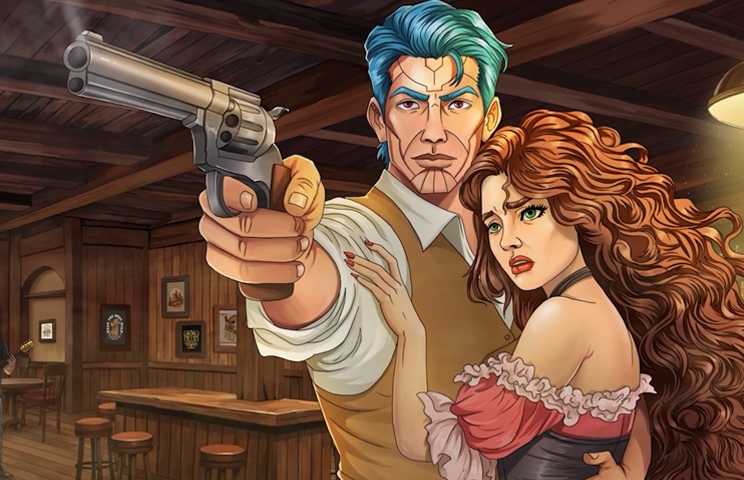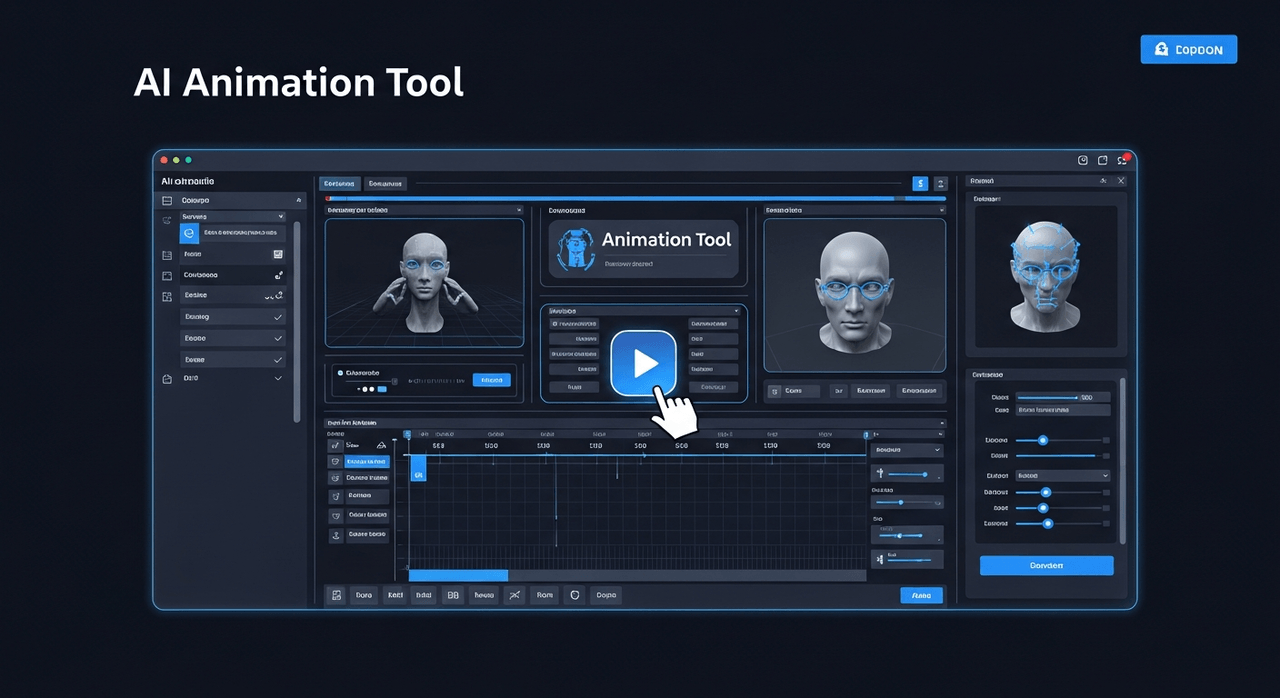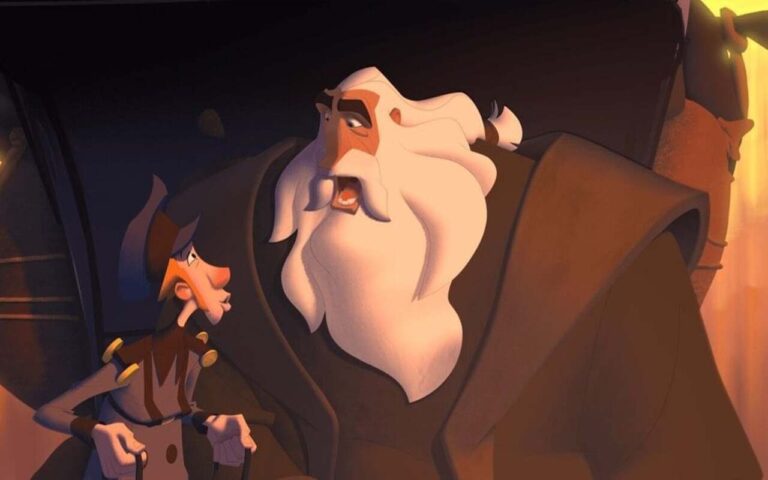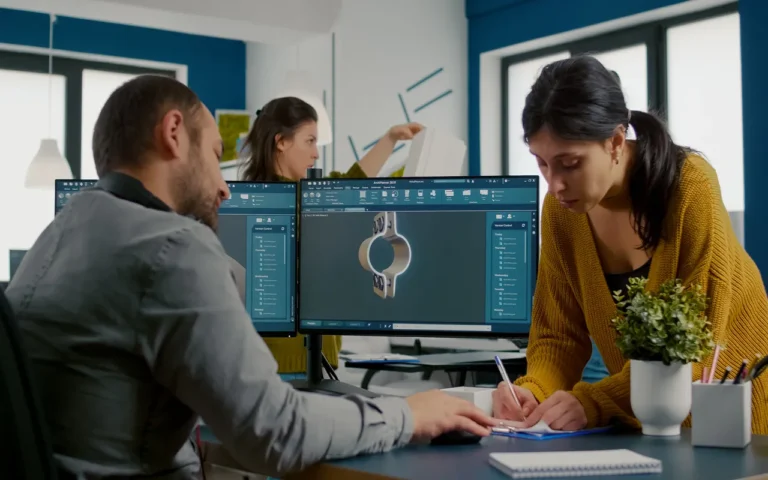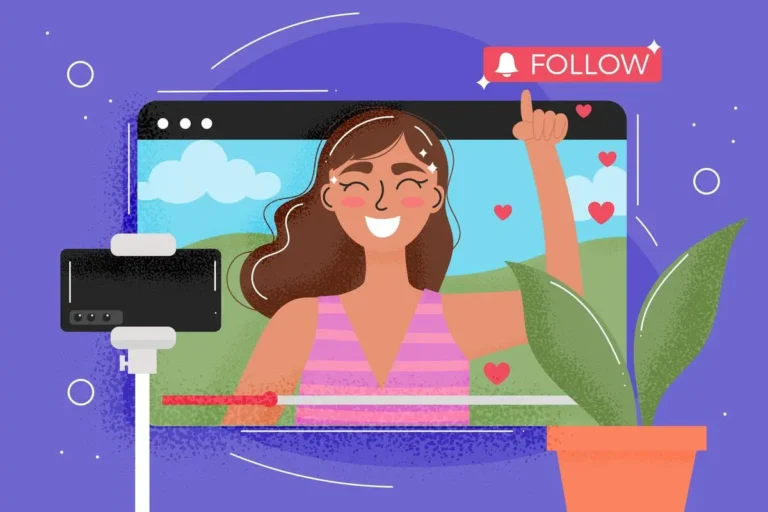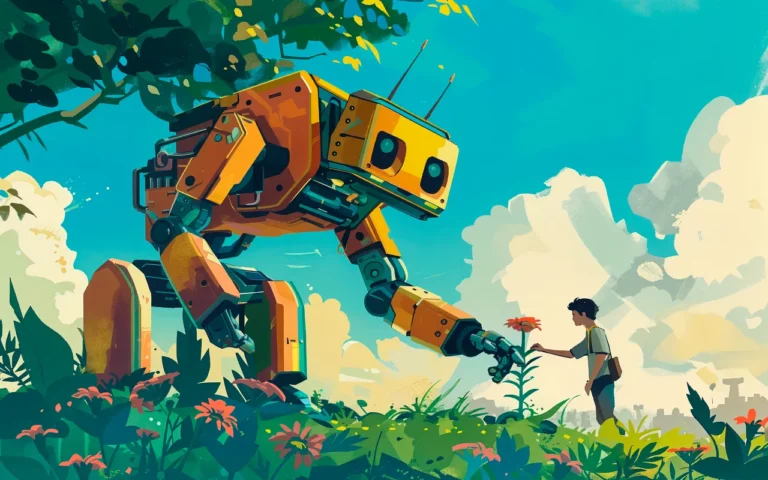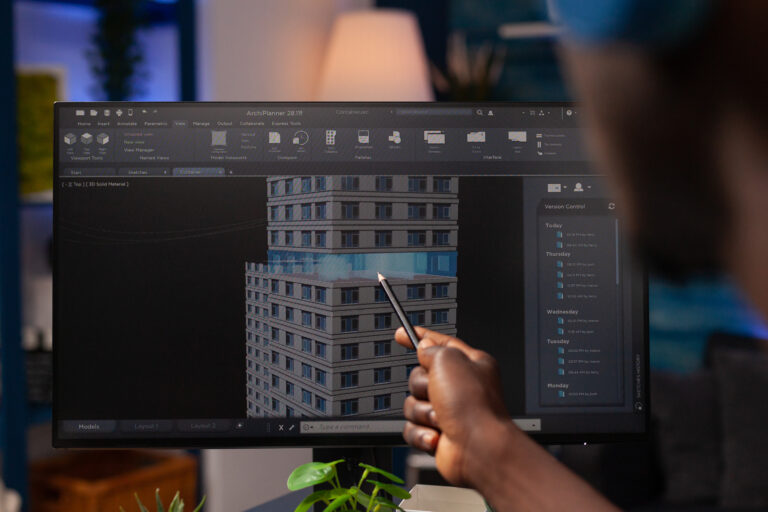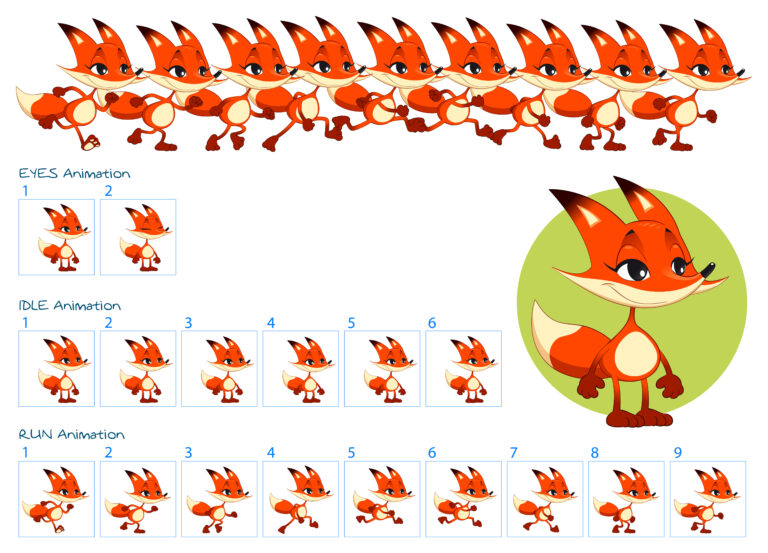You know, when you just think about animation, that whole huge, super creative world? Your brain probably, like, immediately jumps to those incredibly detailed 3D computer graphics. Or, hey, maybe you picture the flowing, really intricate art of traditional, you know, frame-by-frame drawing. But hold on a second. Tucked right into this whole lively field of animation services, there is this incredibly flexible, and honestly, one of the most surprisingly expressive types of 2D animation: that is cut-out animation. And the actual people who make this stuff happen? Yes, they are called cut-out animators.
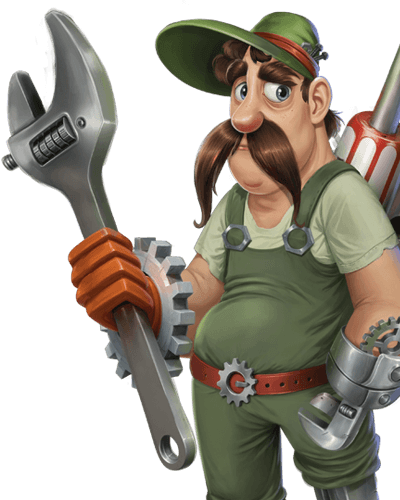
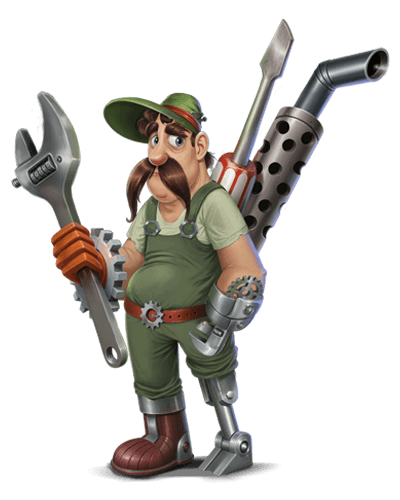
Need 2D Animation Services?
Visit our 2D Animation Service page to see how we can help bring your ideas to life!
Responsibilities of a Cut-Out Animator
Okay, so what exactly does a Cut-Out Animator do? Seriously, it’s way, way more than just moving digital puppets around on a screen. Way more. They are, at their heart, vital storytellers. Their whole main job? It is to take characters and other bits that are already designed – which, digitally, are just collections of separate, movable pieces – and then orchestrate every single action. Every expression. Every tiny little gesture.
This entire process, you know, it typically kicks off with something called puppet rigging. That’s where the animator – or sometimes a dedicated rigging artist – builds this internal, like, skeletal structure for the character, right inside the software. Think of it this way: it is kind of like creating a super sophisticated digital marionette. It has all the joints, the pivot points, the controls that actually let you get smooth, controllable movement.
Once a character is all rigged up, then the animator steps right into the spotlight. They manipulate these rigs, carefully posing the character. Sometimes using frame-by-frame animation, or, more commonly, using keyframe animation by just setting up keyframes at the really important points in the action. Between those keyframes? The software cleverly fills in the movement. It generates all those in-between frames that create the illusion of smooth, continuous motion.
A super important part of their role, though, is making sure that the movement, even with its hinged, cut-out nature, feels natural. It has to feel expressive. It has to truly get across the character’s emotions and what they are trying to do. This really calls for a deep understanding of animation principles. Things like timing, spacing, and arcs. All of that stuff gets applied within the unique rules and opportunities that cut-out techniques offer.

But it is not just about moving things. A Cut-Out Animator is deeply involved in figuring out the bigger artistic vision. They have to meticulously review the animation storyboarding process, animatics, notes from the director. They are translating those often-abstract ideas into real, dynamic performances.
This often means doing careful research. Like, how do real-world things move? How do different emotions show up in tiny changes in posture or facial features? And how do you keep a character looking consistent across an entire sequence, or even a whole series?
Teamwork? Oh, that is absolutely key. They work super closely with character designers to make sure their animation respects the original design. With layout artists, to put characters in exactly the right spot within a scene. And with directors, to ensure the final animation truly serves the overall story.
What is more, because so much episodic production relies on cut-out animation, they often have to manage their workflow incredibly efficiently. That means frequently juggling multiple shots. And hitting some pretty tight deadlines, too.
Ultimately, their responsibility finishes with transforming those static, layered designs into dynamic, compelling performances. Performances that genuinely connect with the audience. And truly push the story forward.
Essential Skills
Here are the essential skills you really need to shine as a Cut-Out Animator:
A Solid Grip on Animation Principles:
This is just, like, foundational. You need to really get how things move believably – stuff like timing (how fast or slow), spacing (how it speeds up/slows down), that little wind-up before an action (anticipation), how things keep moving after the main bit stops (follow-through), and the natural curves things make (arcs). It is all about making even rigid shapes feel alive and expressive, not stiff.
Good Old-Fashioned Drawing Skills:
Yeah, even if you are not sketching every frame, you absolutely need to be able to quickly doodle poses, get ideas down fast, understand how bodies work (even stylized ones!), and totally picture how a character should act. This helps a ton when you are looking at storyboards, planning moves, or even trying to fix tricky rigs. Knowing the steps of creating a storyboard also gives you better insight into how scenes flow and how your drawings fit into the bigger picture. Plus, having an eye for character design makes it way easier to work with the pre-made parts.
Being a Software Whiz (Seriously!):
This is a must-have. It is not just about knowing which buttons to poke. It is about deeply understanding those tools for rigging characters, moving all your layers around, and managing super complex timelines. You need a certain digital agility, you know? Being super comfortable with intricate interfaces.
Top-Notch Problem-Solving Abilities:
Beyond just operating the software, things can get weird. Rigs sometimes act up, files can become crazy complicated, and making a specific movement happen might mean you have to come up with some pretty creative fixes. Being able to quickly figure out what is wrong, try different solutions, and patiently refine things? That is absolutely key.
Patience and an Obsession with Detail:
Even though cut-out animation is efficient, it still demands real precision. Every keyframe, every little tweak to the rig needs it. Tiny mistakes can totally make movements look jerky or glitchy.
Killer Visual Storytelling Skills:
This is huge. You have to be able to convey emotion, what a character wants, and parts of the story purely through how they move. That includes knowing how a posture, a gesture, or even just a subtle tilt of the head can communicate a whole mood or intention. A truly skilled cut-out animator does not just move parts around; they truly act through their characters, making them genuinely connect with the audience.
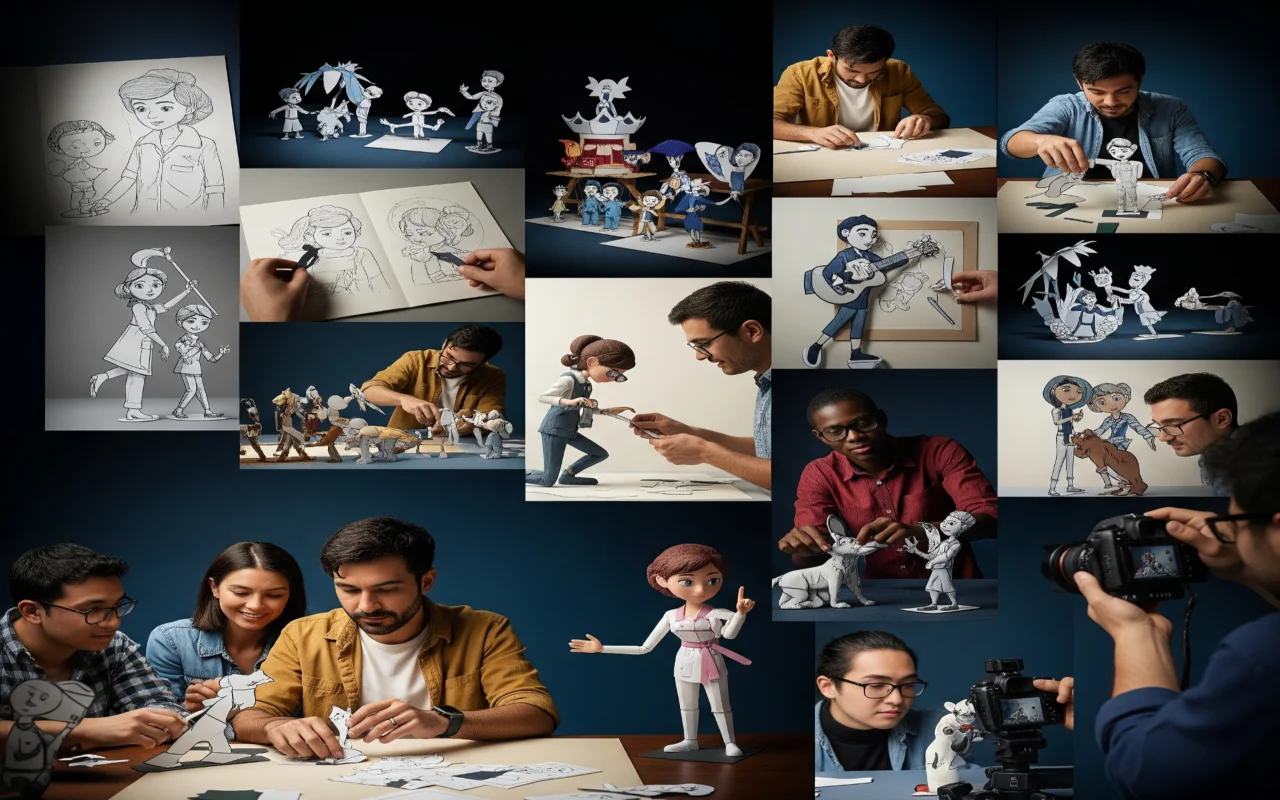
The Cut-Out Animation Process
Here’s how the magic of cut-out animation generally happens:
Design Characters and Assets:
First things first, you design all your characters and everything else in the scene. But here is the trick: you break them down into separate, movable pieces. Think of an arm not as one piece, but maybe a shoulder, forearm, hand, even individual fingers. Everything gets drawn and perfected, ready to move.
Rigging (or Puppet Rigging):
This is where the characters get their “bones.” You bring all those individual pieces into the animation software. Then, you build a digital skeleton, defining where joints bend (like elbows!), setting up how parts connect, and adding controls. The whole point is to make a really strong, easy-to-use rig that gives the animator tons of flexibility.
Actual Animation (Keyframing and Layering):
Once things are rigged, the animator gets to work. They pose the characters at specific moments in time – those are your keyframes. The software helps by filling in the frames in between, but a skilled animator really fine-tunes the timing and spacing, applying all those animation principles to make sure the movement is fluid and expressive, not stiff. This is all about moving distinct parts on separate layers.
Compositing and Final Polish:
After the animation is all smoothed out, it is time to put everything together. This means combining the animated characters with backgrounds, foreground elements, special effects, and any other visual bits. Lighting, shadows, and camera movements get added in, transforming all those individual pieces into one complete, dynamic scene. It is a smooth process because of how modular cut-out assets are!
Techniques in Cut-Out Animation
Here are the main techniques that really define cut-out animation:
Digital Cut-Out Animation:
First off, just know that modern cut-out animation is one of the many types of animation that’s almost entirely digital. We are talking about doing everything inside software, not with paper and scissors like the old days. Characters and props are created as digital graphics and then very carefully prepped so they can actually move.
Puppet Rigging:
This is a huge one. It’s basically giving a flat, 2D character a movable skeleton. Imagine you are making a digital puppet! You set up all the pivot points at the joints (like elbows and knees), define how parts connect to each other, and add controls. Advanced rigs can even bend limbs automatically or help with facial expressions, making everything super consistent and efficient.
Layered Animation:
This is totally fundamental. Every single important piece of a character – like each arm, the head, even individual eyes – lives on its own separate layer within the software. This lets animators move specific parts independently without messing up anything else. It also helps a lot with making movements flow naturally, like when different parts of a character move at slightly different times.
Timing and Spacing:
These are absolutely crucial. While the software fills in the frames between your key poses, it is your skill as an animator that sets those keyframes. How far apart they are (that’s spacing) and how long they hold (that is timing) determines how good and believable the motion looks. A really good animator actively works against stiff, robotic movement, adding subtle touches to make everything feel organic and full of character.
Industry Applications
You know, while hand-drawn animation comes to mind for old cartoons, digital cut-out animation has truly blown up everywhere. It is efficient, incredibly versatile, and just has this distinct look that everyone loves. You see it a ton in TV shows, for both kids and adults – think South Park or Family Guy. Its modular design means studios can reuse assets easily, making it really cost-effective for cranking out episodes fast. Even commercials love it; its unique visual appeal helps brands stand out and get their message across quickly.
But it does not stop there! Cut-out animation is huge for web series, mobile games, and even educational videos. Its accessibility with modern software means smaller teams and independent creators can make high-quality stuff without massive resources. Basically, anywhere you need compelling visual storytelling that is also efficient and has that cool, handcrafted feel, cut-out animation fits right in.
Tools and Software
Here are the main tools you will find in a modern cut-out animator’s toolkit:
Toon Boom Harmony:
This is pretty much the industry standard, especially if you are serious about professional cut-out animation. It is packed with features for every single step – from building incredibly complex character rigs with advanced bones and controls, to drawing, managing your timeline, and even final compositing. It gives animators immense control over their visuals, which is why it is a powerhouse for TV series and big productions.
Adobe After Effects:
You might know this one for motion graphics, but it is surprisingly versatile for digital cut-out animation, especially if a studio is already heavy into Adobe products. You can bring in your layered designs from Photoshop or Illustrator, then use its robust tools and some cool plugins to build sophisticated character rigs. It is great for its keyframing capabilities, expression controls, and effects, making it a favorite for commercial animations, explainer videos, and web animations.
Adobe Animate (formerly Flash):
This one is still relevant, particularly for artists who prefer a straightforward, vector-based way of working. It is really good for creating crisp, clean cut-out characters and has some pretty intuitive tools for tweening. While its rigging might not be as heavy-duty as Harmony or After Effects, it is super easy to use, making it a popular choice for web content, educational animations, and simpler character work.
Adobe Photoshop and Adobe Illustrator:
These are absolutely essential for creating all your character and environment assets before you even start animating. Artists use these to design and prepare all the individual pieces of a cut-out character. They let you create high-quality, scalable artwork that forms the very foundation of your animated puppets.
Career Path
So, beginning a career as a Cut-Out Animator? It is honestly a really rewarding journey, but it absolutely demands a significant blend of artistic talent, technical smarts, and just pure, persistent dedication. The path typically kicks off by getting a very strong foundation in animation education and those absolutely fundamental animation principles. A lot of aspiring animators go for formal degrees in animation, fine arts, or other related digital media programs.
These programs really give you comprehensive training in things like, well, drawing, obviously. Plus, all those animation principles (which are, honestly, useful everywhere!). You also dive into character design, and you get tons of really hands-on experience with the essential software tools for cut-out work. Beyond just getting a degree, you know, specialized workshops, online courses, and even those intensive bootcamps that focus specifically on digital cut-out animation and puppet rigging? Those can also be a totally solid way to just jump in and get started.
When you are just getting your foot in the industry door, entry-level positions for aspiring cut-out animators often include roles like junior animator. Here, you are usually helping more senior animators with specific shots or sequences. A common starting point might also be a rigging artist if a studio has a team dedicated just to building character rigs. In smaller studios, one person might even handle both the rigging and the animation. These initial roles are incredibly important for learning how a specific studio’s animation pipeline—especially within a 2D animation pipeline—works, truly understanding professional workflows, and really honing those basic skills under experienced guidance. It is an invaluable time for putting all your learned theories into practice.
As animators just pile up more and more experience, and here’s the really crucial part, they just keep building this super strong portfolio. If they do that, they can absolutely, positively move up through the ranks, no question. I mean, with a solid, proven track record, an animator might stick to character animation. That’s where you’re responsible for bringing specific characters to life through an entire production. And if you keep pushing? Further advancement can lead you to a lead animator role. Now, that’s where you’re overseeing a whole team of animators, making sure everything looks perfectly, perfectly consistent across all those different sequences.
Ultimately, a really experienced, truly skilled cut-out animator might even become an animation director. That’s a big deal – you’re shaping the overall look, the feel, and the performance of an entire animated project, specifically using all the unique strengths that cut-out techniques offer. Building that portfolio? Seriously, it’s paramount at every single stage. It should show off a diverse range of your work, clearly demonstrating how good you are with cut-out animation techniques.
Plus, a deep understanding of how to apply those animation principles to rigged characters, strong visual storytelling abilities purely through movement, and just showing versatility in different styles. Networking, going to industry events, and staying totally updated with the latest software tools and techniques are also absolutely, completely vital for continuing to grow your career and finding new opportunities in this fast-moving field.
So yeah, while the path definitely demands immense dedication and resilience, that ability to breathe life into layered drawings and tell compelling stories through the unique magic of cut-out animation is, for so many people, an unparalleled and deeply rewarding experience.

Trends in Cut-Out Animation
Digital Cut-Out Animation Got Super Sophisticated:
This is a huge one, honestly. I mean, modern software and these crazy advanced rigging techniques? They’ve just totally transformed what you can even do. Animators can now pull off movements that are incredibly fluid, super expressive, and just so nuanced. Sometimes, you know, they can almost look as smooth as that old-school frame-by-frame stuff, seriously blurring the lines between them. So, yeah, cut-out animation is really shedding that old reputation it had for being stiff or limited. That’s opening up doors for way more complex, more emotionally rich storytelling in animation. Think about it: characters in new shows move way more dynamically now, right? That’s exactly why.
The Big Deal with Hybrid Animation:
Including hybrid animation techniques is where things get really cool. It’s when cut-out elements get blended, like, perfectly with other animation forms. Usually, that means 3D animation or even actual live-action footage. This technique just gives you this unique visual depth, and it really expands what you can do artistically.
So, you might see, like, totally cut-out characters hanging out in these lush 3D environments. Or even intricate hand-painted textures and hand-drawn effects (which, fun fact, can actually be created with cut-out principles!) layered right over computer-generated scenes. It lets creators just pick the best parts of each medium, you know? Like, the efficiency and distinct character of cut-out for performances, combined with all that detailed environment stuff or cool camera moves you get from 3D or live-action.
Read More: Animation vs. Live Action
That “Hand-Crafted” Look? People Love It Now:
There’s this clear, growing appreciation for that raw, almost “made-by-hand” aesthetic within cut-out animation. In a world full of super polished, sometimes kind of sterile digital content, those visible lines, those subtle imperfections, that unique texture you find in a rawer cut-out style? It just has this distinct warmth and personality. It truly connects with audiences.
This trend has totally sparked a demand for styles that intentionally embrace that rawer, almost sketchbook-like quality. You see it a lot in independent films, really unique music videos, and even some high-profile commercials that just want a super distinctive visual voice. It’s all about celebrating the artistry in the craft itself, rather than trying to look perfectly realistic. It’s cool, right?
Powerful Software Tools Got Super Accessible:
This is a game-changer. The fact that powerhouse software like Toon Boom Harmony, Adobe After Effects, and Adobe Animate are so much easier to get your hands on now? That has really empowered a whole new generation of independent animators. Artists can now create, like, genuinely feature-quality digital cut-out animation right from their own personal studios.
They can completely bypass the need for those huge, expensive traditional animation facilities. This accessibility has totally fostered an incredibly vibrant and experimental independent animation scene. Artists are just pushing creative boundaries and exploring diverse stories that might never find a home in bigger, more commercially driven studios. This indie movement is just a hotbed of innovation, constantly bringing in fresh ideas and cool techniques.
Global Animation Is Still a Huge Influence:
And finally, the ongoing influence from those global animation powerhouses, especially from Japan (you know, with its rich anime tradition) and various European studios? That seriously keeps cut-out animation vibrant and innovative worldwide. These regions often embrace distinct traditional and digital cut-out styles, which then totally inspire and influence animators all over the globe.
So, the future of cut-out animation isn’t about, like, directly trying to compete with 3D animation for hyper-realism or massive scale. Nope. Instead, it’s about confidently showing off its unique artistic voice, embracing new technologies to make itself even better, and just consistently proving its enduring power as a compelling and efficient way to tell visual stories. It really just shows that some forms of magic, once you bring them to life through artistry and technique, just never truly fade away. They keep evolving.

